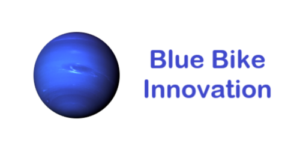

The Climate Collage is a serious game about climate change, based on collective intelligence and creativity. Whether you’re completely new to the topic or quite …

Our cause
Global warming threatens our existence. The evidence is there. This is a time of crisis–and it’s a crisis of our own making. We created this situation, and we can set things straight. Together we are the solution. But we don’t have time to wait.
A movement is growing, a movement of people saying: “This can’t go on–we want change.” We want to connect these people. Social media has created new spaces for collaboration and collective action. Herein lies our opportunity. Together, we are stronger than the status quo. Because the status quo is nothing without us. We own this, and we can fix this, together.
We Don’t Have Time is a social media network for everyone who wants to be a part of the solution. If a large enough number of people want change, and if that energy is directed towards those in charge–change will come.
Being a member of We Don’t Have Time is free of charge and lets you create climate actions as well as interact and follow other member. Read more about the app and our community.

WHAT IS THE CIRCULAR ECONOMY
Circular economy: An Alternative for the “Take, Make, Consume and Dispose” Mindset
It took hundreds of thousands of years for the world population to grow to 1 billion. In 2011, the global population reached the 7 billion mark, and today, it stands at about 7.5 billion (UNPF, 2017). These trends will have far-reaching implications for generations to come. With demand for resources increasing exponentially, experts sound warnings about looming shortages. Not only reserves of key elements -such as gold or silver- could be depleted within 50 years, but also arable surfaced would continue to disappear. Therefore, rethinking how our model functions is of high-priority.
Traditional business models are mostly built on the presumption of cheap, unlimited natural resources which manufacturers take to make products that are consumed and then disposed. This is our most spread system, the linear one, in which we “take, produce, consume and dispose”. According to McKinsey (2014) there is a yearly 80% of unrecovered materials from the $3.2 trillion worth that are used only in consumer goods. Efficiency would increase if consumers and organizations thought twice about the end of products’ lifecycles and how to extract the embedded costs of the materials within the products.
What used to be regarded as “waste” can be turned into a resource.
Waste becomes the source of growth for something new. This model conceives waste as a raw material, based on the reintroduction of materials in the system, combining recycling, reuse and renewable energy and biomimicry.
Production of goods operates like a natural system.
Circular economy is a generic term for a restorative industrial economic model. It stands from the basis that our systems should work like organisms, processing nutrients that can be fed back into the cycle, hence the “restorative” term used. This framework takes insight from living systems and draws from a number of more specific approaches including biomimicry (mimicking nature), industrial ecology and cradle to cradle.
Design and production are made with the end of the product lifecycle in mind and taking into account the materials involved.
William McDonough is an architect, designer and thought leader, and co-creator of the Cradle to Cradle framework, which provides the principles to design eco-effective solutions on the basis of safer materials that can be perpetually cycle back to the technical or biological ecosystems. In this video, he discusses design innovation, a core aspect of the principles of a circular economy.

The Sun Trip showcases new forms of mobility. Each adventurer is a solar energy and eco-mobility ambassador, demonstrating their efficiency, their relevance and their humanist dimension.
A solar bike is first and foremost and electric bike. Located inside the wheel or near the crankset, the engine is fueled by batteries that are themselves recharged by the sun.
The Sun Trip showcases new forms of mobility. Each adventurer is a solar energy and eco-mobility ambassador, demonstrating their efficiency, their relevance and their humanist dimension.
A solar bike is first and foremost and electric bike. Located inside the wheel or near the crankset, the engine is fueled by batteries that are themselves recharged by the sun.
With solar bikes, challenges are many : yield of the photovoltaic cells, solar panel structure weight, total bike weight, rugged battery design, electrical energy transmission, mechanic reliability, etc.
www.thesuntrip.com/presentation/presentation-en/
